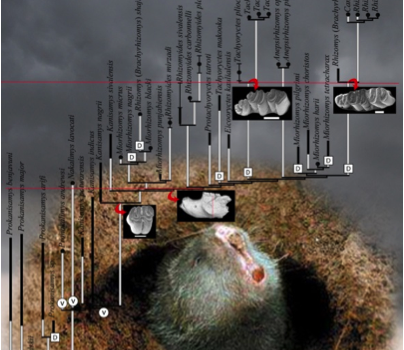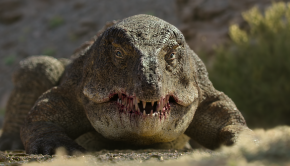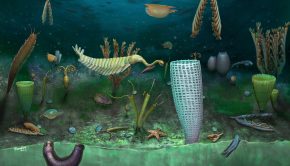Monsoons related to rodent evolution
A recent study suggests a link between monsoons and the evolution of a group or rodents including African mole-rats, approximately 10.5 million years ago.
Lead author Raquel López-Antoñanzas said this: “The monsoon represents a seasonal inversion of the model of normal atmospheric circulation due to an important difference in cooling and warming of the earth with respect to the closest oceanic areas. It results in intense rains that start in June and that mark the beginning of the wet season. The study of the Asian Monsoon has drawn the attention of the scientific community because of its contribution to and influence on the global climatic variation possibly since its onset around the Oligocene/Miocene boundary, approximately 23 million years ago. The impact of this system on the evolution of land vertebrates is unknown. In this work, we analysed for the first time the evolution of a group of rodents, the Rhizomyinae (African mole-rats and Asian bamboo rats) in conjunction with the fluctuation of Indian monsoon over time. Rodents are ideal material for macroevolutionary studies given that they are the most common mammals in the fossil record, they evolved very rapidly, and are particularly sensitive to the modification of their habitat. Rhizomyinae present the added advantage that their relationships have been recently elucidated, their evolutionary history took place mostly in southern Asia, and their fossil record in especially rich in the Miocene deposits of the Siwaliks (Pakistan).
In our work, we have applied methods of phylogenetic palaeobiogeography and biodiversity analysis calibrated against geological time. The phylogenetic corrections of palaeobiodiversity estimates bestow a huge potential on palaeontological data to understand the evolutionary impact of environmental alteration. The estimation of rates for speciation, extinction, and diversity changes shows that the variation of monsoon intensity impacted the evolution of mole-rats and bamboo rats. Our results provide the first evidence of a correlation between monsoon variation and the evolution of a group of mammal. Contrary to what might be expected, the phases of monsoon weakening (which started 10.5 million years ago) were more instrumental to the evolution of these rodents in this part of the world than the periods of monsoon strengthening. This is because a diminishing monsoon reduces the vegetation cover, which in turn entails adaptations toward a subterranean lifestyle. This work offers new perspectives to conservation biologists who work in areas whose climate is rhythmed by the monsoon.”
http://www.nature.com/srep/2015/150311/srep09008/full/srep09008.html
Image copyright Raquel López-Antoñanzas
















